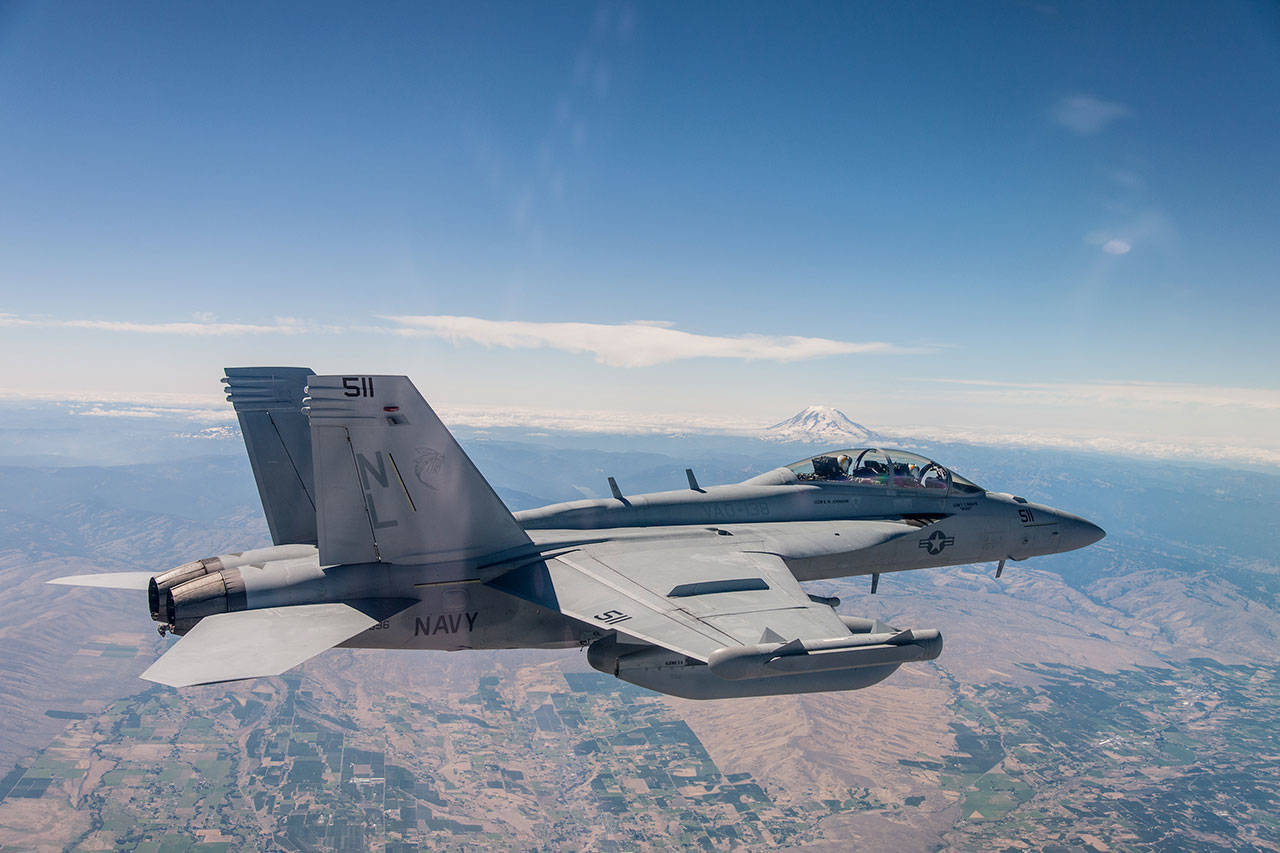U.S. Rep. Rick Larsen has questions for the secretary of the Navy about a plan that will mean a big increase in EA-18G Growler practice at an airfield near the Town of Coupeville.
He’s also working on different efforts that may abate the impact on the community from the noise of the jets, including grants for sound insulation.
In a letter sent to the Navy, Larsen outlines his questions and concerns about the Navy’s announcement of the preferred alternative for the final Environment Impact Statement, or EIS, on Growler operations at Naval Air Station Whidbey Island.
The announcement was made June 25, but the final EIS will be published in September. It will decide how much aircraft carrier landing practice will occur at the Outlying Field Coupeville and the Ault Field base on North Whidbey.
Under the preferred alternative, field carrier landing practice would be distributed with 20 percent at Ault Field and 80 percent at OLF Coupeville. This would increase authorized annual landing practice operations at OLF Coupeville from 6,120 to 23,700.
Larsen writes that he’s a steadfast supporter of NAS Whidbey and its mission, but he’s concerned about the “magnitude of change this action would represent for the Central Whidbey Island communities.”
He questions why the alternative calls for “a significant departure from historical distribution” between the two areas and why a less extreme distribution was rejected.
Larsen notes that the number of Growlers at NAS Whidbey will increase by 44 percent but the number of operations will increase by 287 percent. He asks what accounts for the discrepancy.
Larsen also questions ongoing monitoring of the noise.
“Concentrating aircraft and training in one location saves taxpayer money, and I appreciate the Navy’s efforts to promote further efficiencies,” he wrote. “But it also exposes small communities to significant impacts. Will the Navy commit to funding mitigation efforts, including, but not limited to, construction of a hush house, funding for research and eventual installation of chevrons and other measures as necessary, particularly if a land use study makes disruptive zoning recommendations?”
Ted Brown, a public affairs officer with U.S. Fleet Forces, said the Navy is in the process of preparing detailed responses to Larsen’s letter.
In a separate post, Larsen calls on the Navy to address jet noise and outlines what he’s done to help mitigate the problem.
Larsen writes that he was successful in getting language into the 2016 defense authorization law for research into chevrons, which dampen the noise from the Growlers. He’s working with another member of Congress to increase funding for future research.
“The first flight testing took place in 2015,” he wrote, “and the Navy found that the current chevron design is successful at quieting engines at most settings, but was less effective at higher power.”
The Navy is using information from testing to design more effective chevrons, he said.
Finally, Larsen points out that there are programs that provide funding noise insulation for homes affected by the noise from commercial airports.
“I believe eligibility for federal funding should be expanded to include communities impacted by jet noise from military aviation,” he wrote. “I will work with my colleagues in Congress to change this policy.”



